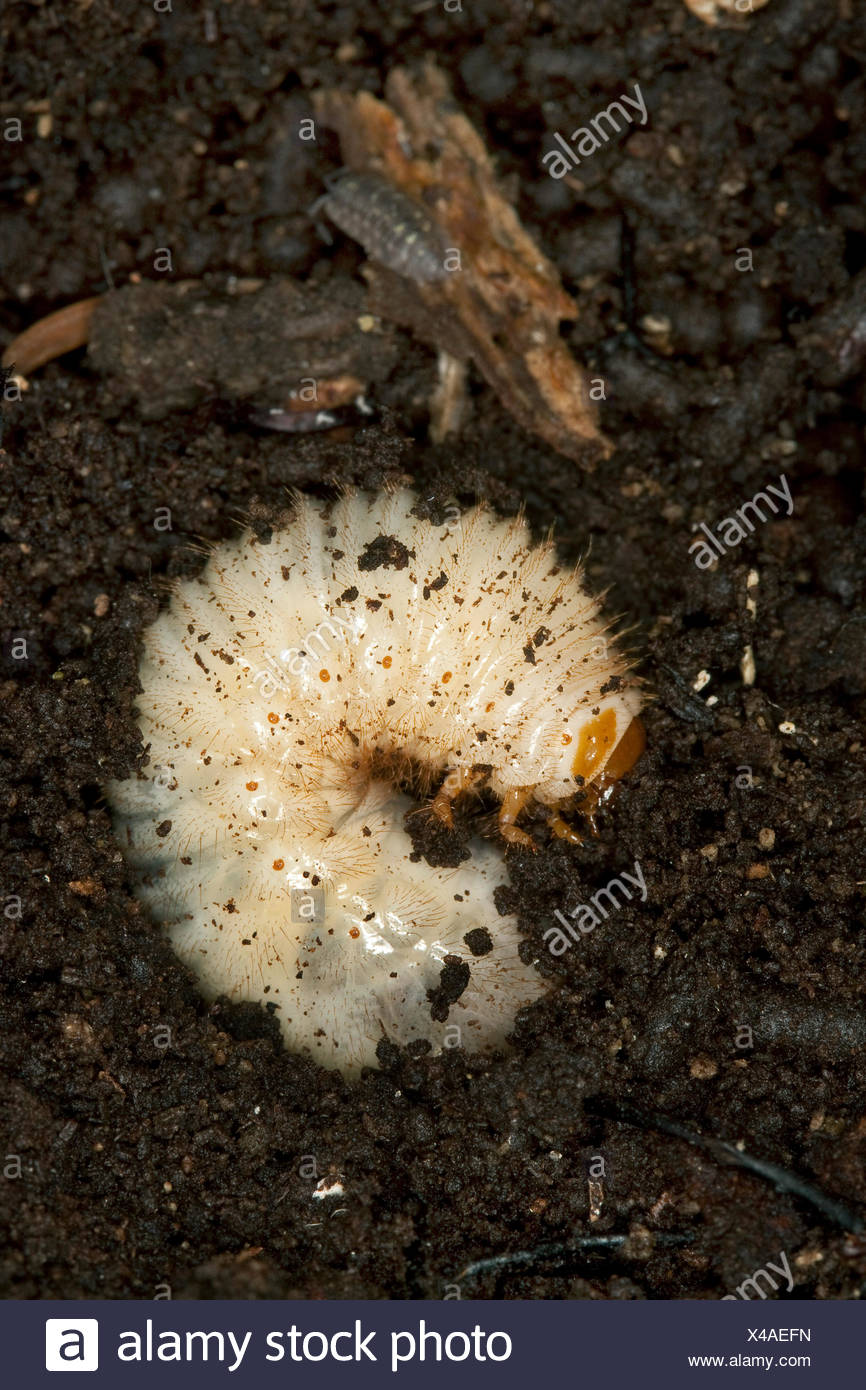
Some types of rove beetles have rather unpleasant habits, living in dung and dead carcasses where they dine on fly maggots. Most feast on small to midsize insects, but some are large enough to prey on caterpillars, slugs and snails too. Unfortunately, their diet includes bees and butterflies, but rove beetles are primarily beneficial predators, preying on aphids, bark beetles, mites, mosquitoes and other unwanted pests. Both the larvae and adults are voracious scavengers and predators that eat nearly anything they can catch. However, some species that feed on the roots of grasses can cause problems in lawns. Some, which are do not cause damage in gardens are found in borders and compost heaps. Depending on the species of chafer they either feed on decaying plant material or plant roots. The emerging adults are very active, especially during the night. Chafer grubs are the soil-dwelling larvae of chafer beetles. Pupation occurs in the soil or in decomposing plant debris. larvae mature over 3-4 years, eating their way through the timber. The head capsule is well developed, with visible antennae, compound eyes and chewing jaws. The eggs hatch into larvae in a few weeks and bore into the wood. Pupa, which are usually immobile, are off-white to yellowish, with a segmented abdomen and three pairs of long legs. They are generally off-white with brownish heads. Rove beetle larvae, which overwinter in leaf matter or in the soil, have a flat appearance. The eggs, which are minute, are difficult to see.

Female rove beetles lay clusters of white to cream color, round or pear-shaped eggs where a food source for offspring is nearby – usually in rotten wood, plant matter, or in the soil. Understanding the life cycle of rove beetles is one way of helping with identification of these insects. Many rove beetles are brown, grey or black, some with grey markings on the abdomen and wings. Micropezidae are a rather large dipteran family distributed worldwide. The larvae of this two species differ in the structure of the anterior and posterior spiracles and the cephalopharyngeal skeleton. The main diagnostic characters of the larvae are listed.

Most are medium size, but some are as large as 1 inch (2.5 cm.) in length. The larvae inhabit the bark of damaged and weakened trees. Many are slender with long bodies, looking similar to earwigs without pincers. Most rove beetles have large heads and prominent eyes. In general, rove beetles have short front wings, giving them the appearance that they are poor flyers, but longer hind wings hidden under the short wings allow them to fly very well. However, there are a few common identifying factors to watch for. Adult Rove Beetle Identificationĭue to the wide diversity between species, in-depth rove beetle identification is beyond the scope of this article. Rove beetles are found in moist habitats ranging from lakeshores, beaches and tropical forests to prairies, alpine timberline, arctic tundra, and even the garden. What are rove beetles? Beetles are a huge group of insects, and rove beetles are one of the largest beetle families of all, with thousands of species in North America and around the world.


 0 kommentar(er)
0 kommentar(er)
